RP-SMA Extension Cable: Length, Loss & Router Fit
Oct 28,2025
Preface
In Wi-Fi, LTE, and IoT systems, a few inches of cable often decide whether the signal is strong or barely usable. That’s where an RP-SMA extension cable becomes quietly essential. It lets you shift the antenna to a clearer spot—away from walls or enclosures—without opening the router or adding adapter stacks that weaken the link.
The trick is finding that sweet spot between length, flexibility, and RF loss. A shorter RG316 cable jumper might work fine indoors, while outdoor links demand sturdier options like RG58 cable or LMR-240 cable. At TEJTE, each RP-SMA assembly is built around 50-ohm precision, PTFE insulation, and brass gold-plated connectors that hold up under both torque and weather.
Should you use an RP-SMA extension cable or stack adapters?
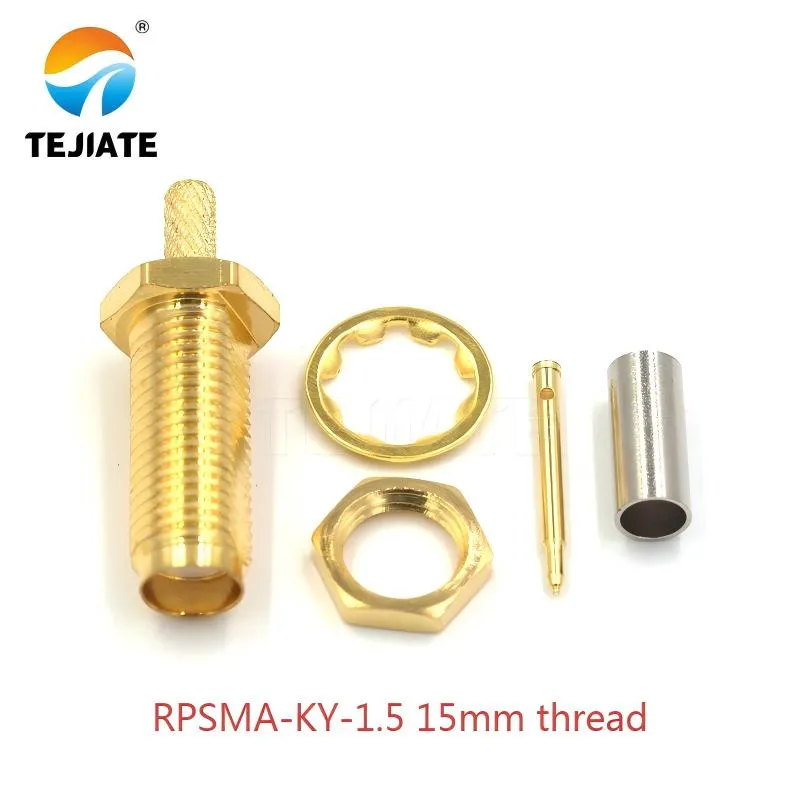
This image clearly shows the physical structure of this RP-SMA male connector, including its 15mm thread length, interface face (center receptacle), and possible O-ring sealing groove, emphasizing its performance with insertion loss ≤0.15dB @ 6GHz, making it a key component for building tidy, low-loss extension lines.
Every RF engineer has tried to “fix” clearance problems by piling adapters—an SMA barrel here, a right-angle there—until the antenna finally fits. But each added interface increases insertion loss by roughly 0.1 – 0.3 dB, and the mismatch can nudge your VSWR just high enough to matter at 5 GHz or above.
A clean RP-SMA extension cable does the same job with fewer joints and no extra impedance bump. The RG316 cable version (2.5 mm OD, silver-plated braid) offers about 1.46 dB/m @ 2.4 GHz and 2.34 dB/m @ 6 GHz, which makes it perfect for short patching inside routers or test setups.
For mid-range layouts, RG58 cable—5 mm outer diameter and ≤ 21.2 dB per 100 m @ 400 MHz—balances cost and durability. And for long outdoor routes, LMR-240 cable stands out: its foam-PE dielectric and dual shields keep loss below 37.7 dB per 100 m @ 2 GHz, with a static bend radius near 30 mm.
When space is tight, a short jumper often beats stacking. A half-meter RG316 with a bulkhead connector like TEJTE RPSMA-KY-1.5 (15 mm thread, insertion loss ≤ 0.15 dB @ 6 GHz) keeps things tidy and repeatable. The rule of thumb still holds—the fewer the joints, the cleaner the signal.
For deeper connector fit guidance, the Right-Angle SMA Adapter article article explains why short jumpers almost always outperform stacked fittings.
How long can an RP-SMA extension be before loss kills throughput?
| Cable Type | Attenuation @ 2.4 GHz | Attenuation @ 5 GHz | Typical Max Length (Wi-Fi / LTE) | Bend Radius |
|---|---|---|---|---|
| RG316 | 1.46 dB/m | 2.15 dB/m | ≤ 2 m (indoor) | 15 mm |
| RG58 | 9.3 dB / 10 m | 10.5 dB / 10 m | ≤ 5 m (general) | 50 mm |
| LMR-240 | 4.25 dB / 100 m @ 2.5 GHz | 6.8 dB / 100 m @ 3 GHz | ≤ 15 m (outdoor) | 30-61 mm |
A 1 m RG316 adds roughly 1.5 dB at 2.4 GHz; 5 m of RG58 adds ≈ 4.5 dB; 10 m of LMR-240 only ≈ 3.7 dB. Once total loss exceeds 6 – 8 dB, throughput at 5 GHz often halves. That’s why installers jump from RG316 straight to LMR-240 once runs exceed 20 ft.
In TEJTE field tests, replacing RG316 with LMR-240 on a 10 m outdoor Wi-Fi link improved RSSI by almost 4 dB, stabilizing the video stream. Its foam-PE core, tinned-copper braid, and UV-resistant PVC jacket ensure the signal stays consistent even after years of exposure. For long vertical runs or mast installations, pair it with RP-SMA bulkheads that use O-rings to keep the IP67 seal intact.
More design details appear in LMR-240: Loss, Bend & Outdoor Routing, which expands on power budgets and waterproof routing.
Can you mix RP-SMA and SMA safely on your router?
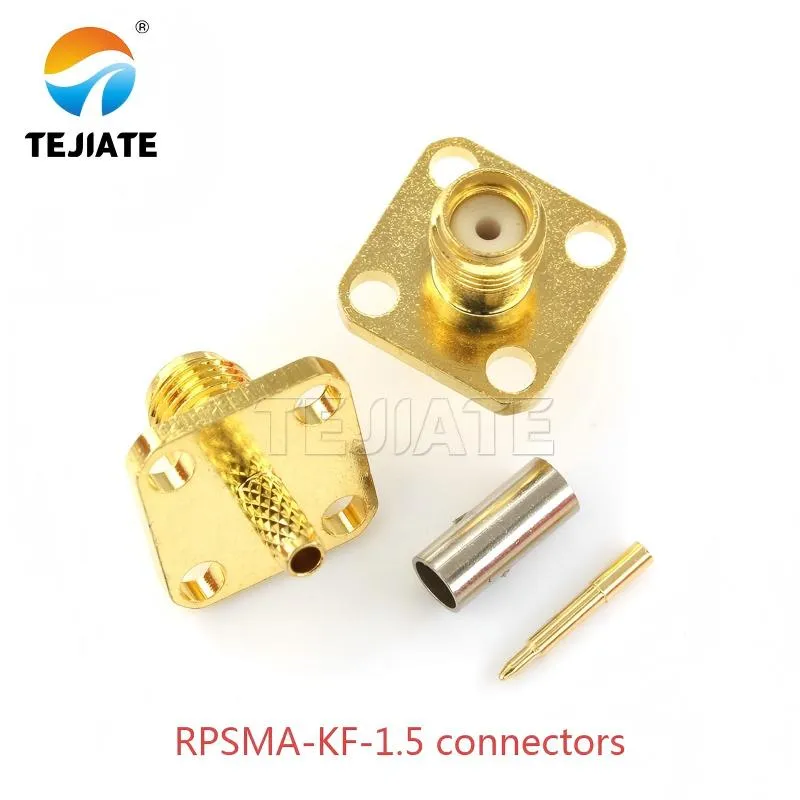
This product photo clearly shows the exterior details of the RPSMA-KF-1.5 connector, including its internal thread design, center contact (a receptacle instead of a pin), and possibly the accompanying locking nut. As a key component of the TEJTE RP-SMA series, it uses PTFE insulators, beryllium bronze contacts, and silicone O-rings to ensure low insertion loss (≤ 0.15 dB @ 6 GHz) and stable electrical performance even in harsh environments (e.g., passing 48-hour salt spray tests).
Many DIY users don’t realize that RP-SMA connectors reverse the inner contact while keeping the same thread. The result? Two identical-looking plugs that refuse to carry signal.
Here’s the quick reference:
| Connector Type | Thread Gender | Center Contact | Common Use |
|---|---|---|---|
| SMA Male | Outer Thread | Pin | Antenna Modules, RF Test Ports |
| SMA Female | Inner Thread | Socket | Device Input |
| RP-SMA Male | Outer Thread | Socket (Reversed) | Wi-Fi Routers |
| RP-SMA Female | Inner Thread | Pin (Reversed) | External Antennas |
Most Wi-Fi routers (TP-Link, Huawei, Netgear etc.) use RP-SMA female ports—inner threads with a visible center pin. Connecting an ordinary SMA male (which also has a pin) leaves both sides floating. No contact, no signal.
Check polarity before tightening. The dielectric face should appear flat and clean; never force a mismatched pair or twist under load. TEJTE’s RPSMA-KY-1.5 and RPSMA-KF-1.5 connectors include Teflon insulators, beryllium-bronze contacts, and silicone O-rings that survive 48-hour salt-spray tests. They’re ideal when transitioning to N-type antennas via a short RP-SMA to N-type pigtail, maintaining correct polarity and waterproof integrity.
Further insight on mating tolerances appears in SMA Connector Guide: Selection, Polarity & MIMO Setup.
What cable should you pick for bend radius and outdoor routing?
Cable flexibility is often underrated until you try to close a router lid with a stiff coax sticking out. Each RP-SMA extension cable behaves differently when it comes to bend radius, jacket material, and UV stability.
For compact spaces—like internal Wi-Fi modules or FPV drones—RG316 remains the go-to. It bends easily (minimum 15 mm radius), uses a silver-plated copper braid, and withstands up to 150 °C, making it ideal for tight enclosures or test benches.
When you need longer routing with a bit more durability, RG58 is the middle ground. Its solid PE dielectric and 5 mm PVC jacket resist abrasion, though it’s less tolerant of sharp bends (50 mm min radius).
For outdoor work, LMR-240 is in a different class. It has a foam-PE dielectric surrounded by laminated aluminum foil + tinned-copper braid, capped with a UV-resistant PVC jacket (6.1 mm OD). The result is lower RF cable loss—only 4.25 dB per 100 m @ 2.5 GHz—and long-term stability in sunlight or rain.
If you plan outdoor routing through a panel or enclosure, always combine the cable with a bulkhead RP-SMA connector that includes an O-ring and locking nut. Models like RPSMA-KY-1.5 or RPSMA-KF-1.5 are tested to maintain IP67 sealing even after 500 connection cycles.
For a full guide on weather-proofing and material choices, see IP67 Connector: O-ring Sealing, Bulkhead Install & Outdoor RF.
Will the extension break your IP seal or torque spec?
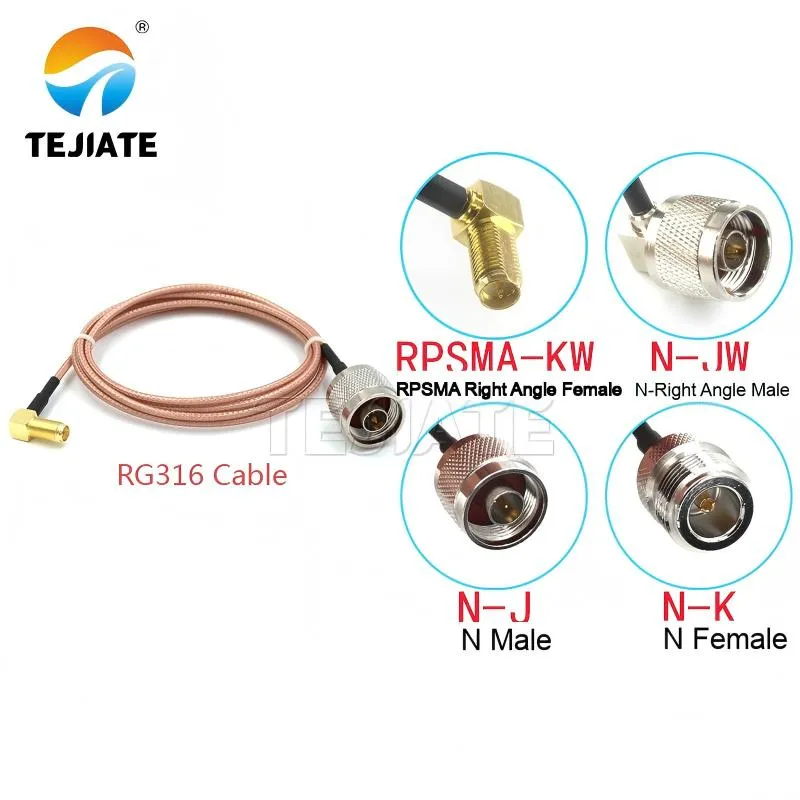
This image demonstrates a specific connector solution that combines the space-saving advantage of an RP-SMA right-angle with the mechanical strength and potential waterproofness of an N-type interface for outdoor applications. It illustrates how to achieve a compact and reliable connection from inside the device to an external antenna.
When you mount an antenna feed-through on an outdoor router box, the risk isn’t the connector itself—it’s the tightening torque and the seal around it. Over-tightening can deform the dielectric; under-tightening can leak water right into your 50-ohm coax cable.
TEJTE’s RP-SMA series uses silicone O-rings (grade 6146) that maintain elasticity across –40 °C to +85 °C, paired with Teflon insulators and beryllium-bronze contacts. For bulkhead installation, aim for a torque of 0.6 N·m—just enough to compress the O-ring without twisting the cable.
A small trick from field installers: hold the connector body still with an 8 mm wrench while tightening the nut from behind. This prevents torsion stress that can crack PTFE insulation or detune your VSWR.
If the system uses an N-type connector outside the chassis, add a short RP-SMA to N-type pigtail with a waterproof boot or heat-shrink sleeve. It isolates vibration and allows easy replacement without opening the enclosure.
Those same sealing and torque principles are explained in RF Connector: Install, Clean & Waterproof, which expands on grounding and long-term reliability.
How do you verify “works as expected” without lab gear?
Not every installer has a spectrum analyzer or VSWR bridge handy. Fortunately, a few quick checks can confirm your RP-SMA extension cable is performing within spec.
Start simple: use a multimeter continuity test to ensure the center conductor and shield are not shorted. Then connect your antenna and check your device’s RSSI or signal strength reading. Each 3 dB drop roughly equals half the power—so if you see a –6 dB difference before and after adding the extension, that’s about right for a 2 m RG316 or 5 m RG58 run.
If you’re using a dual-chain MIMO router, verify both paths are equal in length—uneven cables can desynchronize phases at 5 GHz. Also watch for mechanical strain: if the extension hangs from the port, use a zip tie or clamp for relief.
For a quick on-site check, lightly flex the cable near the connector while monitoring the RSSI graph. If the signal flickers sharply, the crimp may be weak or the braid fractured. Re-terminate or replace before sealing everything up.
Additional test methods and attenuation budgets are covered in RF Cable Loss: Pick, Budget & Verify at 2.4/5/6 GHz, which details field-verification techniques.
Can you order once and get exactly the right RP-SMA cable?
Most buyers expect an RP-SMA extension cable to be a simple part number, but matching polarity, length, and sealing correctly in one go saves a lot of rework.
At TEJTE, every assembly is defined by both connector structure and cable specification. For instance, the RPSMA-KY-1.5 (external thread + inner pin, 15 mm bulkhead) mates with RPSMA-KF-1.5 (inner thread + pin reversed) to form a full extension line.
Choosing between RG316, RG58, and LMR-240 depends on your environment. RG316 is best for confined indoor routes, RG58 fits mid-length runs, and LMR-240 dominates outdoor spans where attenuation must stay low. All maintain 50 Ω impedance and low VSWR (≤ 1.20 @ 6 GHz).
The matrix below helps pick a setup that meets both signal and mechanical requirements.
RP-SMA Extension Selection Matrix
| Device Port | Antenna Port | Length Options | Cable Type | Est. Loss @ 2.4/5/6 GHz (dB) | Sealing | Adapter Allowed? | Suggested TEJTE P/N |
|---|---|---|---|---|---|---|---|
| RP-SMA F (Router) | RP-SMA M (Antenna) | 0.3 m / 1 m / 2 m | RG316 (2.5 mm OD) | 1.46 / 2.15 / 2.34 dB/m | Boot + Shrink | O - short runs only | RPSMA-KY-1.5 / RG316 |
| RP-SMA F (Router) | RP-SMA M (Antenna) | 3 m / 5 m / 10 m | RG58 (5 mm OD) | 9.3 / 10.5 / 11.5 dB / 10 m | Boot optional | 1 - OK if short stack | RPSMA-KF-1.5 / RG58 |
| RP-SMA F (Router) | N-type F (Outdoor Antenna) | 10 m / 25 ft / 50 ft | LMR-240 (6.1 mm OD) | 4.25 / 6.8 / 8.5 dB / 100 m | O-ring IP67 | 0 - direct connection | RPSMA-KY-3 to N-KF / LMR240 |
(Data derived from TEJTE spec sheets and verified attenuation values; tolerance ± 10 %)
For special routing—such as waterproof router boxes or outdoor antennas—the combination RP-SMA to N-type is the most robust. It minimizes transition points and uses heat-shrink boots for lasting moisture resistance.
You can find ready-made assemblies on the RF Cables page page, which includes both RP-SMA to RP-SMA and RP-SMA to N-type variants.
How much loss will your run add at 2.4/5/6 GHz—should you relocate the radio?
Extension-Cable Loss Estimator
Formula:
[ Loss_{total} = α(f,cable) × L + N × 0.2 ]
where
- α = attenuation (dB/m) from spec
- L = length in meters
- N = connector count (each ≈ 0.2 dB)
| Example Setup | Cable | Length | Frequency | Connectors | Total Loss | Notes |
|---|---|---|---|---|---|---|
| Indoor Router → Wi-Fi Antenna | RG316 | 1 m | 2.4 GHz | 2 | 1.5 + 0.4 = 1.9 dB | Excellent |
| Outdoor Router → Roof Antenna | RG58 | 5 m | 5 GHz | 2 | 5.25 + 0.4 = 5.65 dB | Acceptable |
| Mast Antenna → Indoor Modem | LMR-240 | 10 m | 6 GHz | 2 | 3.7 + 0.4 = 4.1 dB | Excellent |
A 5 dB loss means only about 32 % of the transmitted power reaches the antenna. In high-bandwidth links (5–6 GHz), that’s often the difference between 300 Mbps and 100 Mbps throughput.
If your calculated loss exceeds 6 dB, you have three realistic fixes:
- Shorten the run and move the router closer to the antenna.
- Upgrade from RG58 to LMR-240 or even LMR-400.
- Replace any SMA to SMA adapter stack with a single continuous jumper.
These same budgeting methods are detailed further in RF Cable Loss: Pick, Budget & Verify at 2.4/5/6 GHz.
Why precise cabling decisions pay off long-term
RF systems rarely fail all at once—they degrade quietly through tiny mismatches, moisture leaks, or 1 dB losses that go unnoticed. A well-chosen RP-SMA extension cable—matched to your frequency, environment, and length budget—prevents those headaches.
In TEJTE’s endurance testing, brass gold-plated RP-SMA connectors retained conductivity after 500 cycles and showed contact resistance < 5 mΩ even after salt-spray exposure. Combined with the right coax—RG316 for flexibility, RG58 for general use, or LMR-240 for long outdoor feeds—the link stays predictable across temperature swings from –40 °C to +80 °C.
That reliability translates directly into consistent throughput and lower maintenance costs.
When building or upgrading a wireless network, always plan for total loss, mechanical stress, and sealing quality from day one. It’s a small step that defines whether your 5 GHz MIMO link works flawlessly—or fails silently under rain.
FAQ: Common Questions About RP-SMA Extension Cables
Will a 25-ft or 50-ft RP-SMA extension still work at 5 GHz or 6 GHz?
It depends on your cable type. A 25-ft run (≈7.6 m) using RG58 can lose around 5 dB at 5 GHz, while LMR-240 drops only 3.5–4 dB. That difference often doubles usable throughput.
At 50 ft, RG58 becomes marginal, but LMR-240 still performs reliably for router-to-antenna extensions or base-station links. Keep total RF cable loss below 6 dB if possible—beyond that, relocate your radio closer to the antenna and use a short jumper.
Is it safe to mix RP-SMA and SMA connectors with an adapter, or should I re-terminate the cable?
You can use a short SMA-to-RP-SMA adapter, but every extra junction adds roughly 0.2 dB loss and can degrade VSWR. If you’re building a permanent installation, re-terminate with the correct connector instead.
The visual cue: RP-SMA female ports have a center pin, while SMA female have a socket. Mixing them risks an open circuit or bent pin. TEJTE’s RPSMA-KY-1.5 and RPSMA-KF-1.5 connectors simplify this—each is machined to tight tolerances with Teflon dielectric and gold-plated brass for corrosion-free mating.
Which cable should I choose for an RP-SMA extension—RG316, RG58, or LMR-240?
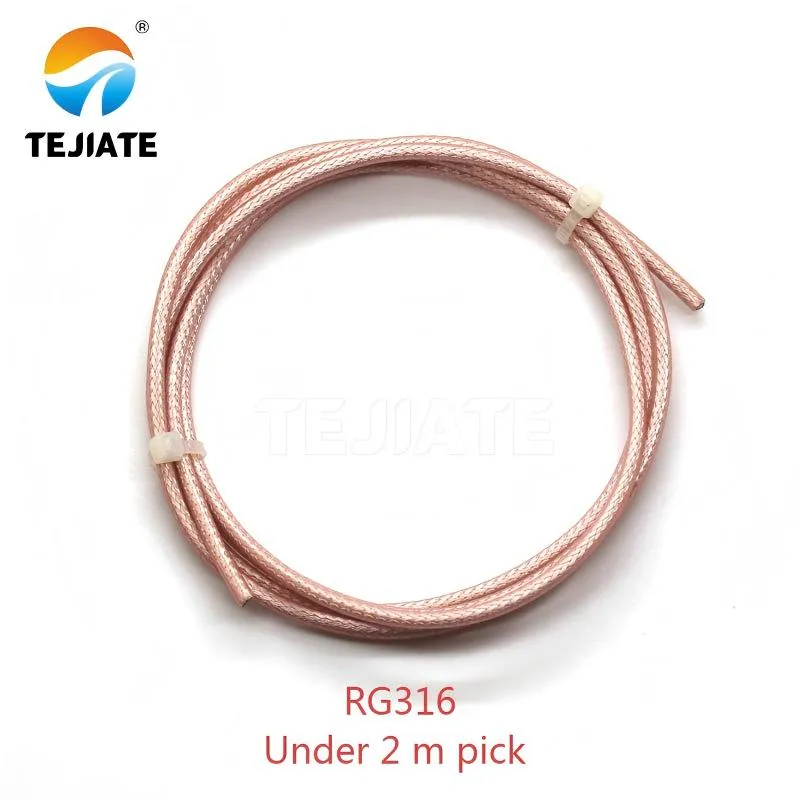
This graphic or product image aims to reinforce the recommendation in the document - "Under 2 m, pick RG316". It likely demonstrates the flexibility of RG316 cable, its silver-plated copper braid, or wiring examples in high-density equipment, emphasizing its irreplaceability in short-distance, high-frequency (despite higher loss) applications.
- RG316 – Best for short, flexible, high-temperature environments; attenuation ≈ 1.46 dB/m @ 2.4 GHz.
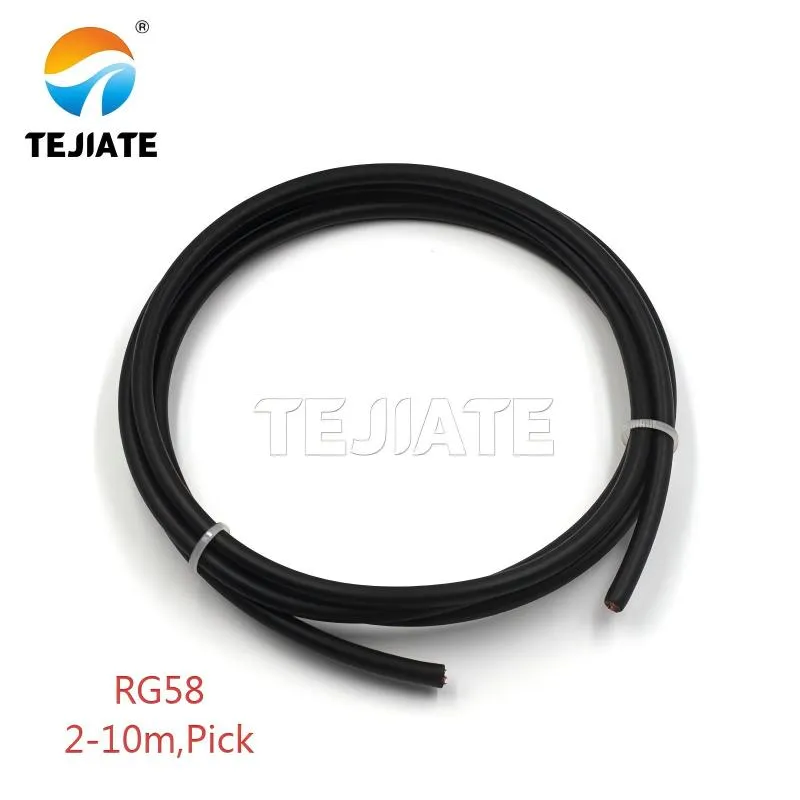
This image likely presents the relatively robust PVC jacket (5mm OD) of RG58 cable and its typical application environments, such as general indoor wiring or connections between equipment where high flexibility is not critical, visually conveying its "general-purpose" positioning.
- RG58 – A solid mid-range coax for moderate loss and easy termination.
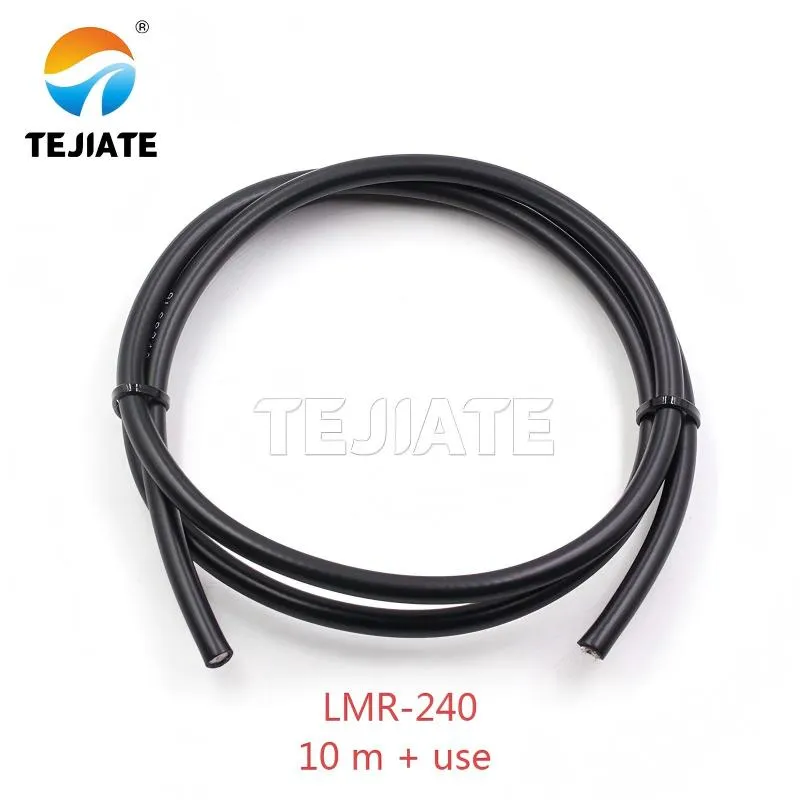
This image aims to show the robust appearance, thicker outer diameter (6.1mm) of LMR-240 cable, and its application examples in outdoor environments (e.g., rooftops, antenna masts), reinforcing its positioning as a long-distance, low-loss solution.
- LMR-240 – Low-loss choice for long outdoor or tower runs (≈ 4.25 dB/100 m @ 2.5 GHz).
All are 50 Ω coax cables, but the dielectric and shielding define how far your link can stretch before signal fade.
A simple rule: under 2 m, pick RG316; 2 – 10 m, go RG58; 10 m + use LMR-240.
Will an RP-SMA extension break my router’s waterproof seal—and how do I protect it?
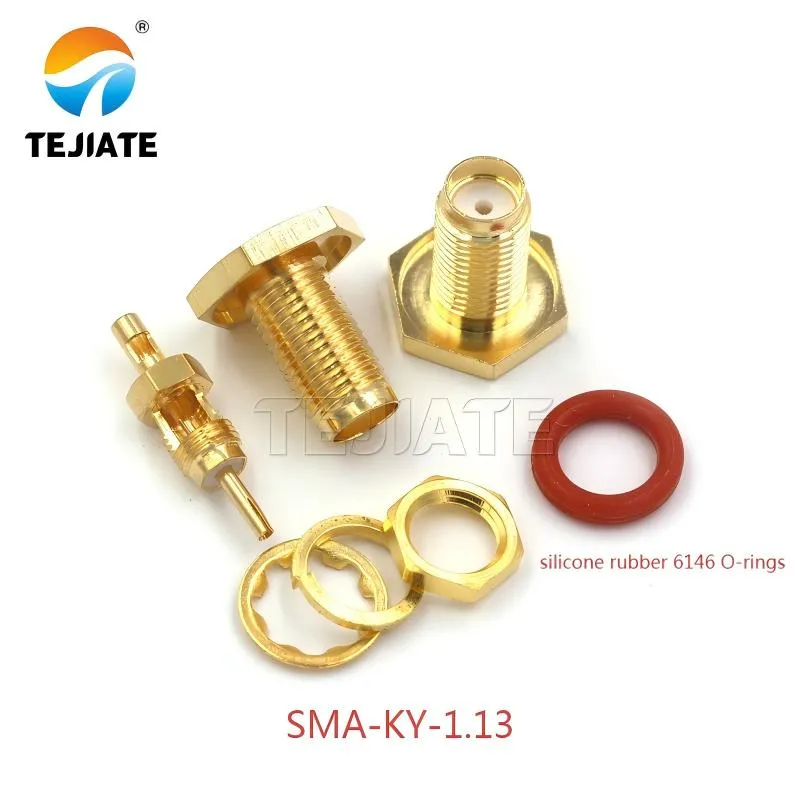
This image focuses on the details of the O-ring, likely showing its material, cross-sectional shape, and installation position on the connector, explaining how it maintains elasticity from -40°C to +85°C and passes 48-hour salt spray tests, making it the core for achieving reliable outdoor sealing and waterproofing.
It can, if the bulkhead nut is over-tightened or the O-ring misaligned.
TEJTE’s connectors use silicone rubber 6146 O-rings, tested for 48 hours of salt-spray exposure and repeated torque cycles (≈ 0.6 N·m). When passing through an enclosure, tighten until the washer compresses uniformly.
Add heat-shrink boots or a short pigtail jumper for strain relief—both prevent micro-cracks in PTFE insulation and maintain the IP67 seal even in rain.
Can I use a signal booster with an RP-SMA extension—what loss budget should I plan?
Yes, but calculate first. Suppose your booster outputs 20 dBm (100 mW):
- 2 m of RG316 → ≈ 3 dB loss → 17 dBm delivered.
- 5 m of RG58 → ≈ 5 dB loss → 15 dBm.
- 10 m of LMR-240 → ≈ 4 dB loss → 16 dBm.
Keep end-to-end loss below 6 dB; otherwise, the booster’s gain is wasted. You can verify this using the Loss Estimator table in this article or the detailed calculator in the post RF Cable Loss: Pick, Budget & Verify at 2.4/5/6 GHz.
How do I connect coax to an RP-SMA router port without damaging the center pin?
Before tightening, make sure the male side (with thread) lines up straight—never twist under load.
Use your fingers first, then finish with a torque wrench to about 0.6 N·m.
If resistance feels uneven, stop and realign; forcing it may crack the dielectric.
A light coat of contact cleaner on the pin ensures stable conduction and corrosion resistance.
This technique is covered in TEJTE’s guide RF Connector: Install, Clean & Waterproof.
What quick checks confirm my extension isn’t the bottleneck (without lab gear)?
Power up your router, record the RSSI before adding the cable, then after.
A 1–2 dB drop is normal for short runs; 5 dB + indicates excessive loss or poor crimp.
Flex the cable gently while monitoring the signal—any sharp dips suggest a fractured braid or cold solder.
These low-tech tests mirror those used in the field by TEJTE’s assembly engineers and match results from their LMR-240 and RG58 endurance testing data.
Final Thoughts
An RP-SMA extension cable may look simple, but every detail—connector plating, jacket type, sealing, and torque—directly shapes network reliability.
By combining verified materials (pure-copper conductors, PTFE or Foam-PE insulation, double shielding) with correct cable selection, you minimize RF cable loss and avoid the hidden traps of mismatched polarity or water-ingress.
TEJTE’s catalog of 50-ohm coax assemblies, RP-SMA connectors, and N-type transitions provides a full ecosystem for engineers who need both electrical precision and mechanical resilience.
Plan your cable lengths carefully, keep connections clean, and treat every 0.5 dB as real money in your link budget—the small choices are what make your wireless network dependable for years to come.
Bonfon Office Building, Longgang District, Shenzhen City, Guangdong Province, China

A China-based OEM/ODM RF communications supplier
Table of Contents
Owning your OEM/ODM/Private Label for Electronic Devices andComponents is now easier than ever.
